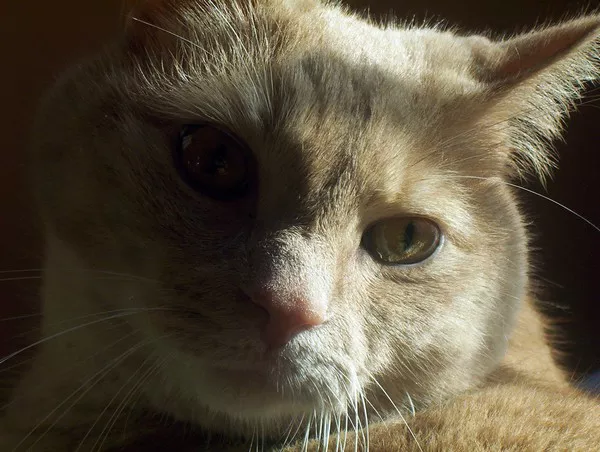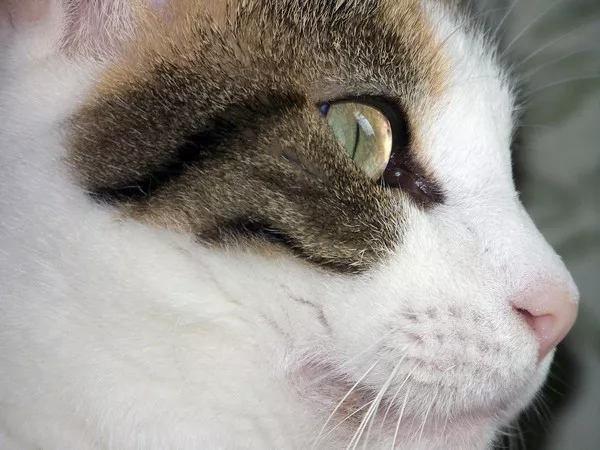When it comes to feline nutrition, choosing the right food is paramount for ensuring the health and well-being of your cat. Wet cat food, often referred to as canned cat food, is a popular choice among cat owners due to its palatability and moisture content. Cats are obligate carnivores, meaning they require a diet rich in animal proteins and specific nutrients to thrive. This essay will explore the most nutritious wet cat food options available, the essential components that contribute to a healthy diet, and how to select the best products for your feline companion. By the end of this guide, you will have a comprehensive understanding of wet cat food, enabling you to make informed decisions that support your cat’s health.
Understanding Feline Nutrition
The Unique Nutritional Needs of Cats
Cats have distinct dietary requirements that set them apart from other pets. As obligate carnivores, they rely heavily on animal-based proteins for their energy and overall health. Key nutritional components include:
High-Quality Protein: Cats require a diet that is high in protein (approximately 30-50% of their total caloric intake) to support muscle maintenance, energy levels, and overall health. Animal proteins are rich in essential amino acids that cats cannot synthesize on their own.
Fats: Healthy fats are important for energy and are crucial for maintaining skin and coat health. Omega-3 and omega-6 fatty acids help reduce inflammation and support brain function.
Vitamins and Minerals: Cats need a variety of vitamins and minerals, including taurine (an essential amino acid), vitamins A, D, E, and B, and minerals such as calcium and phosphorus. These nutrients are vital for various bodily functions, including vision, bone health, and immune function.
Water: Hydration is essential for cats, and wet cat food provides a significant moisture content that can help keep them hydrated, especially if they do not drink enough water.
The Role of Wet Cat Food
Wet cat food offers several advantages over dry food. Its high moisture content can help prevent urinary tract issues and support overall hydration. Additionally, many cats find wet food more palatable, making it an excellent option for picky eaters or those with dental issues. Wet food can also be beneficial for kittens and senior cats, who may struggle with the texture of dry kibble.
Key Ingredients in Nutritious Wet Cat Food
When evaluating wet cat food, it is essential to understand the key ingredients that contribute to its nutritional value. Here are some critical components to look for:
High-Quality Animal Protein
The first ingredient in a nutritious wet cat food should be a high-quality source of animal protein, such as chicken, turkey, beef, or fish. Look for specific protein sources rather than generic terms like “meat by-products” or “animal meal.” High-quality protein sources provide the essential amino acids that cats need for optimal health.
Healthy Fats
Fats are a crucial energy source and should come from quality sources. Look for foods that include named fats, such as chicken fat or fish oil, which provide essential fatty acids. Omega-3 and omega-6 fatty acids are particularly important for maintaining skin and coat health.
Minimal Fillers and Carbohydrates
Cats do not require carbohydrates in their diet, so it is best to choose wet foods with minimal fillers such as corn, wheat, or soy. While some wet foods may contain small amounts of vegetables or grains, these should not be the primary ingredients. Focus on products that prioritize meat and animal-based ingredients.
Vitamins and Minerals
Ensure that the wet cat food is fortified with essential vitamins and minerals. Look for added taurine, vitamins A, D, E, and B, as well as minerals like calcium and phosphorus. These nutrients are vital for various bodily functions, including vision, bone health, and immune function.
Probiotics and Prebiotics
Some wet cat foods include probiotics and prebiotics to support digestive health. Probiotics are beneficial bacteria that help maintain a healthy gut microbiome, while prebiotics are fibers that feed these beneficial bacteria. Look for foods that mention these ingredients, as they can contribute to your cat’s overall health.
Evaluating Wet Cat Food Brands
With numerous brands on the market, it’s essential to evaluate their reputations, ingredient quality, and nutritional profiles. Below are some of the top wet cat food brands known for their nutritious formulations:
Royal Canin
Overview: Royal Canin is renowned for its science-based approach to pet nutrition. They offer a variety of formulas tailored to specific breeds, life stages, and health conditions.
Nutritional Highlights:
- High-quality animal protein as the primary ingredient.
- Tailored formulas for specific health needs (e.g., urinary health, digestive sensitivity).
- Comprehensive vitamin and mineral profile.
Considerations: While Royal Canin is highly regarded, some formulas may contain grains and fillers that some cat owners prefer to avoid.
Hill’s Science Diet
Overview: Hill’s Science Diet is another reputable brand that focuses on scientifically formulated diets. They offer a range of products for different life stages and health conditions.
Nutritional Highlights:
- Real meat is the primary ingredient in many formulas.
- High protein content with added taurine for heart health.
- Formulas designed for weight management, dental health, and sensitive stomachs.
Considerations: Some formulas may include grains, which may not be suitable for all cats, especially those with grain sensitivities.
Blue Buffalo
Overview: Blue Buffalo prides itself on using natural ingredients and avoiding artificial preservatives, colors, and flavors. Their “Homestyle Recipe” and “Wilderness” lines are popular among cat owners.
Nutritional Highlights:
- High-quality protein sources, including deboned meat.
- Whole grains and vegetables for added nutrition.
- Antioxidants and vitamins for immune support.
Considerations: While many cats thrive on Blue Buffalo, some may have sensitivities to certain ingredients, so it’s important to monitor your cat’s response.
Wellness CORE
Overview: Wellness CORE focuses on grain-free, high-protein diets. Their formulas are designed to meet the nutritional needs of active cats.
Nutritional Highlights:
- High-quality animal protein as the primary ingredient.
- Grain-free options with added probiotics for digestive health.
- Rich in omega fatty acids for skin and coat health.
Considerations: Some cats may prefer a diet with moderate carbohydrates, so it’s essential to evaluate your cat’s preferences and dietary needs.
Merrick
Overview: Merrick is known for its high-quality ingredients and grain-free recipes. They offer a range of wet cat foods that focus on protein-rich diets.
Nutritional Highlights:
- Real meat is the primary ingredient.
- Grain-free options with added probiotics for digestive health.
- Variety of flavors to cater to different feline preferences.
Considerations: While Merrick is a reputable brand, some formulas may be higher in calories, so portion control is essential for weight management.
Nutro
Overview: Nutro emphasizes natural ingredients and offers a variety of wet cat food options, including grain-free and limited ingredient diets.
Nutritional Highlights:
- Real meat as the first ingredient in many formulas.
- No artificial preservatives, colors, or flavors.
- Formulas tailored for specific life stages and dietary needs.
Considerations: Nutro’s formulas are generally well-received, but some cats may have sensitivities to certain ingredients, so monitoring is essential.
Instinct by Nature’s Variety
Overview: Instinct is known for its raw-inspired diets that focus on high-quality, minimally processed ingredients. They offer both grain-free and high-protein options.
Nutritional Highlights:
- High-quality animal protein as the primary ingredient.
- Grain-free options with added probiotics for digestive health.
- Variety of flavors and textures to appeal to different cats.
Considerations: Instinct’s premium quality may come with a higher price tag, but many cat owners find the investment worthwhile for their pets’ health.
Transitioning to a New Wet Cat Food
When switching your cat to a new wet food, it’s important to do so gradually to minimize digestive upset. Follow these steps for a successful transition:
Start Slowly: Begin by mixing a small amount of the new food with your cat’s current food. A common ratio is 25% new food to 75% old food.
Gradual Increase: Over the course of 7-10 days, gradually increase the proportion of the new food while decreasing the old food. Monitor your cat’s response and adjust the transition as needed.
Observe for Reactions: Pay attention to any signs of digestive upset, such as vomiting or diarrhea. If these occur, slow down the transition process.
Consult Your Veterinarian: If you have concerns about your cat’s diet or health, consult your veterinarian for personalized guidance.
Common Myths About Wet Cat Food
Wet Food is Too Expensive
While wet cat food can be more expensive than dry food, it often provides higher-quality ingredients and better nutrition. Additionally, the moisture content can help prevent health issues that may arise from dehydration, potentially saving money on veterinary bills in the long run.
Cats Can Survive on Dry Food Alone
While cats can survive on a diet of dry food, it may not provide the optimal hydration and nutrition they need. Wet food can help ensure that cats receive adequate moisture in their diet, which is particularly important for urinary health.
All Wet Cat Foods are the Same
Not all wet cat foods are created equal. It’s essential to read labels and choose high-quality brands that prioritize animal protein, healthy fats, and essential nutrients. Avoid foods with excessive fillers and artificial additives.
Conclusion
Choosing the most nutritious wet cat food is vital for your cat’s health and well-being. By understanding feline nutritional needs and evaluating key ingredients, you can make informed decisions about your cat’s diet. Brands like Royal Canin, Hill’s Science Diet, Blue Buffalo, Wellness CORE, Merrick, Nutro, and Instinct offer high-quality options that cater to various dietary needs.
Remember that each cat is unique, and their nutritional requirements may vary based on age, activity level, and health status. Always consult your veterinarian for personalized dietary recommendations and monitor your cat’s response to any dietary changes.
With the right wet cat food, you can help ensure your feline friend leads a healthy, happy life filled with vitality and joy. Prioritizing their nutritional needs will not only enhance their quality of life but also strengthen the bond you share with your beloved pet.
Related topic:

























